Modafinil for Students: Complete Dosage, Safety & Study Guide
What Is Modafinil? Student Guide Introduction"
Modafinil – originally developed for narcolepsy – has surged in popularity as a “smart drug” on college campuses. Students facing intense academic pressures have turned to this wakefulness-promoting pill to extend focus, reduce fatigue, and boost productivity during exams. This guide provides an in-depth look at modafinil’s cognitive effects, how students worldwide are using it, the benefits and risks for studying, best-use practices, side effects (and how to mitigate them), and a comparison with other enhancers like caffeine, Adderall, and racetams. It is designed as a clear, educational resource for those curious about modafinil’s off-label use in academia.
How Modafinil Works: Brain Effects & Cognitive Benefits for Students
 What Is Modafinil? Provigil for Students Explained
What Is Modafinil? Provigil for Students Explained
Modafinil (Provigil®) is a central nervous system stimulant and eugeroic (wakefulness promoter) approved to treat disorders like narcolepsy, shift-work sleep disorder, and sleep apnea1. Off-label, healthy individuals use modafinil to heighten alertness and concentration for prolonged periods, essentially “hacking” their brain’s fatigue signals23. Unlike caffeine or amphetamines which flood the body with adrenaline or dopamine spikes, modafinil’s mechanism is unique – it increases wakefulness by engaging multiple neurotransmitter systems (histamine, dopamine, etc.) without the same jittery rush of classic stimulants45. This means users feel awake and focused but with a “cleaner” stimulation65, often absent of the euphoric highs or racing heartbeats that Adderall or caffeine can induce.
 Modafinil Cognitive Benefits: Focus & Memory Enhancement
Modafinil Cognitive Benefits: Focus & Memory Enhancement
Research shows modafinil can meaningfully improve certain higher-order cognitive functions, especially when tasks are long or complex. A 2015 systematic review of 24 studies found modafinil consistently enhanced performance on complex or difficult tasks, particularly those requiring executive functions like decision-making and planning78. In non-sleep-deprived people, it did not significantly boost simple short-term memory or creativity, but it shined in tasks demanding sustained attention, careful reasoning, and adaptive thinking910. In other words, you won’t suddenly become a genius or recall textbook pages photographically; however, you may stay sharply focused for hours, maintain a higher level of mental endurance, and make more considered decisions under modafinil’s influence. Many students also report a side benefit of enhanced mood or motivation, describing an increased willingness to tackle work (possibly due to modafinil’s slight dopamine elevation)1112. Crucially, modafinil’s cognitive boost is most apparent during fatigue or cognitive overload – it’s known to “ameliorate poor performance,” essentially preventing the decline in function that comes with exhaustion13. For a student pulling a long study session, this can translate to feeling mentally “fresh” even late in the day. Notably, studies also indicate modafinil has a low incidence of adverse effects in healthy users; most report only minor issues like headaches or slight insomnia if dosage timing is wrong1415.
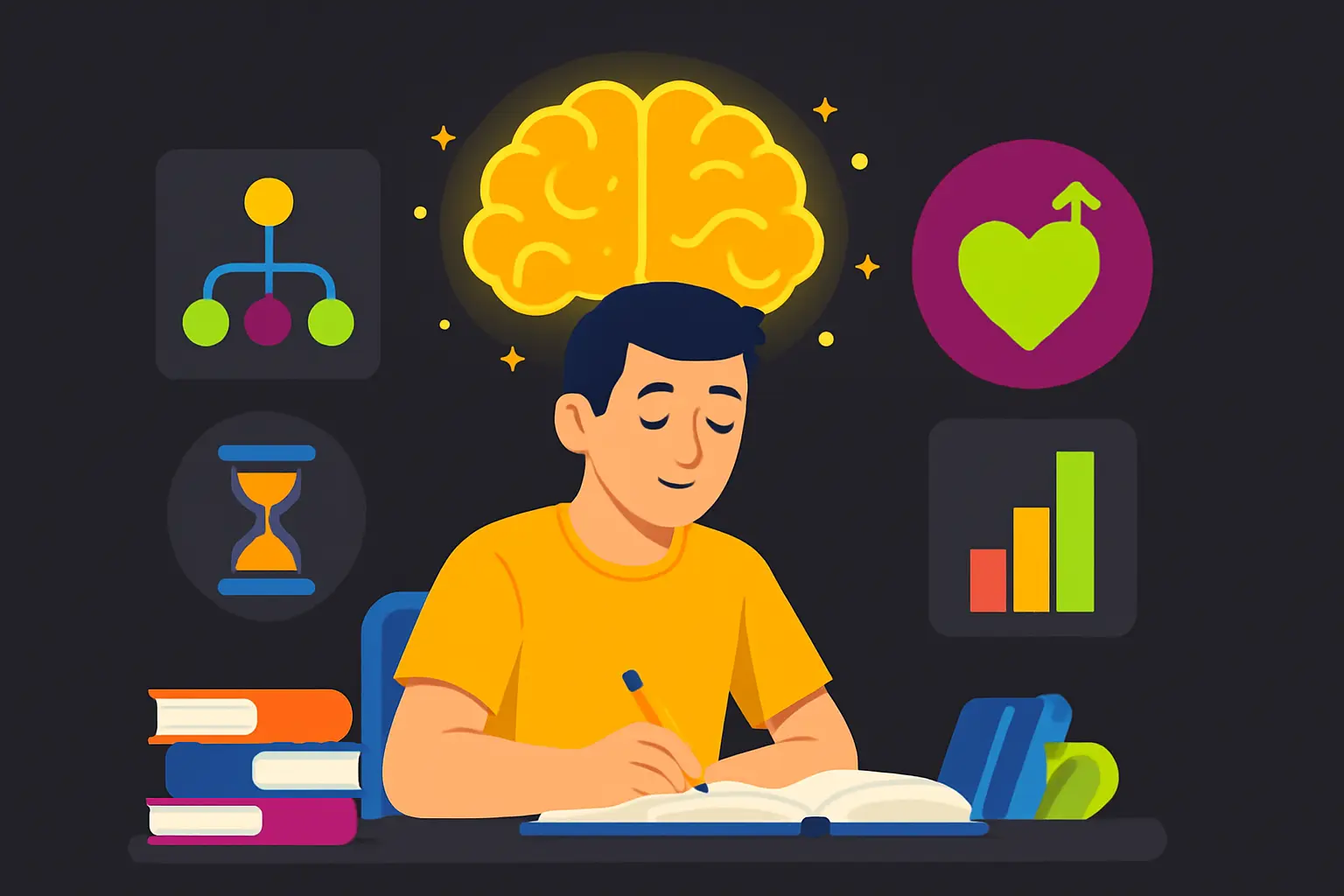
Student Modafinil Usage Statistics: UK, US & Global Trends
 United Kingdom
United Kingdom
At elite universities, usage is relatively high. A 2016 Oxford University student survey found 15.6% of students had taken modafinil or a similar “study drug” without a prescription16. Broader UK studies estimate lifetime usage of prescription cognitive enhancers around 6–10% of students1718, with modafinil being the most commonly used enhancer (reported ~9–10% lifetime prevalence in some samples)17. Experts note that these numbers may be underestimates – indirect anonymous polling hints actual usage could be even higher (one study found up to 16.6% with more confidential questioning)1920. The trend is upward: research observes a suggested increase in smart drug use since 2011 in the UK2120, coinciding with growing awareness and availability of modafinil online.
 United States
United States
Estimates vary widely by campus. Surveys across U.S. colleges have found anywhere from about 5% up to 35% of students report using prescription stimulants (like Adderall or modafinil) as study aids22. One commonly cited statistic is that roughly 1 in 5 college students have tried a smart drug at least once during their studies23. Prevalence tends to be higher at more competitive institutions and among certain faculties – for example, one survey found 14.3% of law students had used cognitive enhancers in the past year24. While Adderall (an ADHD medication) historically dominated U.S. “study drug” culture, modafinil is increasingly popular as an off-label choice due to its perceived safety and easier online access. American students often obtain modafinil through online pharmacies or international sources since it requires a prescription in the U.S. (Schedule IV controlled substance)25.
 Online Communities & Anecdotes
Online Communities & Anecdotes
The rise of modafinil is tightly linked to internet forums. Reddit’s nootropics communities (such as r/Modafinil and r/Nootropics) count tens of thousands of members, many of them students sharing tips and personal stories. On these forums, modafinil is often praised as the ultimate study hack. “The level of focus on your exams goes through the roof,” one user wrote in a modafinil discussion, emphasizing the drug’s remarkable boost to concentration26. Another student told Vice News that modafinil made him feel like the movie “Limitless” – suddenly able to plow through work with unparalleled efficiency27. Common themes in these anecdotes include: studying for 10+ hours straight without fatigue, forgetting to eat lunch because one never feels tired or hungry, and experiencing an almost hyper-real clarity on complex material. However, forum users also swap advice on pitfalls (like potential insomnia or the importance of staying hydrated). The online consensus is that while modafinil won’t make a dumb person smart, it can make a tired or distracted person highly productive. This word-of-mouth, from Reddit threads to student Facebook groups, has fueled modafinil’s global popularity despite legal restrictions.
Students in countries from Australia to India report similar patterns of use, ordering pills online and integrating “moda” into their study routines28.
Modafinil Benefits for Students: Focus, Study Endurance & Performance
-
Prolonged Focus and Alertness: Modafinil’s primary appeal is its ability to extend one’s focus span dramatically. A single dose (100–200 mg) can promote wakefulness for 10–12 hours, keeping users alert through all-day study marathons or overnight cramming29. Sustained attention is improved – tasks like reading dense material or solving problem sets can be maintained with fewer breaks. One student who uses modafinil described it as, “a really natural sense of focus. It gives you a drive. You want to study. It really stops me procrastinating.”12 This extended focus is especially valuable during exam prep, when students may otherwise struggle with drowsiness or wandering attention after long hours.
-
Enhanced Motivation and Drive: Many users report a noticeable boost in motivation. Mundane or difficult study tasks feel more achievable or even interesting under modafinil’s influence. As the Vice interviewee above noted, you “want to study” on modafinil12 – a stark contrast to normal procrastination tendencies. This anti-procrastination effect might stem from modafinil’s impact on dopamine and other neurotransmitters that influence reward and novelty. Students often find themselves tackling backlogs of reading or starting assignments immediately, rather than succumbing to distractions. In essence, modafinil can provide a mental push to initiate and sustain work, which is crucial in overcoming pre-exam lethargy.
-
Extended Study Endurance (Reduced Fatigue): As a wakefulness drug, modafinil excels at warding off mental fatigue. It significantly reduces the normal tiredness that accumulates after many hours of studying3. This means a student can potentially study longer hours with high productivity. For example, a group of friends might take modafinil at 6 AM and, as one user reported, “study for a solid 12 hours” with only brief breaks for food29. Even late in the session, they remain alert and cognitively present. Modafinil essentially compresses the fatigue curve, so tasks at 8 PM can be approached with nearly the same vigor as at 8 AM. This endurance boost is also valuable during lengthy exams or back-to-back classes – students feel they can keep going where normally their energy would crash. (Of course, this comes at the cost of subsequent sleep, which must be recovered – more on that under side effects.)
-
Improved Cognitive Performance on Complex Tasks: Beyond just feeling awake, modafinil has been shown to sharpen certain cognitive processes that are relevant to studying and exams. Research has found improvements in executive functions – for instance, planning an essay or solving multi-step analytical problems can become more efficient7. Decision-making quality may rise, useful for tackling tricky multiple-choice questions or research decisions in a project30. Some students also report better memory retention, especially for what they studied while on modafinil. While scientific evidence on memory is mixed10, the subjective feeling of “I can absorb and recall more information” is often cited. Modafinil likely helps indirectly by keeping one engaged and mentally “in the zone,” so the time spent studying is truly effective. There is even evidence of improved reaction time and processing speed on certain tasks15, which could translate to quickly working through exam questions. In sum, modafinil can heighten various aspects of cognition that together make learning and test-taking more productive – not by raising raw intelligence, but by allowing your brain to operate at its optimal performance state for longer.
Safe Modafinil Dosage & Timing: Student Best Practices Guide
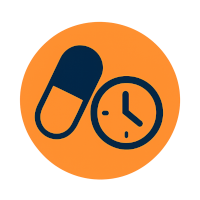 Modafinil Dosage for Students: 50-200mg Timing Guide
Modafinil Dosage for Students: 50-200mg Timing Guide
Most students take 100–200 mg of modafinil per session (200 mg being a standard single tablet for Provigil/Modvigil). Timing is everything: to avoid sleep disruption, modafinil is best taken early in the day, typically morning (around 6–9 AM)31. It takes about 30–60 minutes to kick in, so some will dose an hour before starting their study block. Never take modafinil in the late afternoon or evening, as its effects last ~12+ hours and can easily push your bedtime into the AM32. For example, taking 200 mg at 8 AM can keep you alert until at least 8 PM. If you have an overnight study emergency, modafinil can be taken later, but expect significant insomnia. Plan your modafinil days in advance: align the dose time so that 12–15 hours later, it will be roughly when you intend to sleep.
 Taking Modafinil with Food: Hydration & Nutrition Tips
Taking Modafinil with Food: Hydration & Nutrition Tips
Modafinil is best taken with a substantial breakfast or lunch. This not only helps absorption but counteracts modafinil’s appetite suppression – you may not feel hungry for many hours after, so front-loading calories is wise. Staying hydrated is equally important: many users carry a water bottle and sip regularly to prevent the mild dehydration and headaches modafinil can cause. Schedule meal and snack breaks during long study sessions even if you don’t feel hungry, to keep your energy and nutrition up. Remember, modafinil can mask the usual signals of hunger and fatigue, so you need to proactively take care of your body.
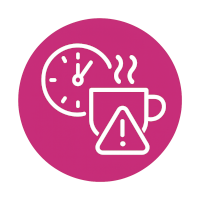 Avoid Redosing and Late-Day Caffeine
Avoid Redosing and Late-Day Caffeine
Taking more modafinil (“redosing”) in the same day is not recommended, as it greatly increases the chance of side effects and won’t necessarily increase cognitive benefits. Typically, one morning dose is sufficient for the day. If you do feel an afternoon slump, use caffeine judiciously rather than a second modafinil pill. A small cup of coffee or tea in the early afternoon can provide a gentle boost, but be careful: stacking a lot of caffeine on top of modafinil can trigger jitters or anxiety in some people33. Keep caffeine doses moderate and avoid any stimulants in the hours close to bedtime. Just like with coffee, you should cut off modafinil (and any caffeine) at least 6–8 hours before you plan to sleep.
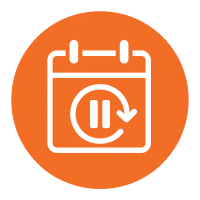 Modafinil Cycling Schedule: Avoiding Tolerance & Dependence
Modafinil Cycling Schedule: Avoiding Tolerance & Dependence
Do not use modafinil every single day continuously. Tolerance can develop with daily use, meaning the drug’s effects might diminish over time3435. Many student users adopt a cycle like “one day on, one day off” during the exam period36. For instance, use modafinil on days with your heaviest studying or back-to-back classes, and skip it on lighter days to let your body reset. One student in Australia noted, “I take it in the morning or around lunch time … I would take it once or twice a week during semester,” which helped him avoid sleep issues and dependency31. By using modafinil 2–3 times a week rather than daily, you reduce strain on your system and ensure each use packs the desired punch. Also plan to stop using modafinil after finals – continuous weeks of use should be followed by a break so your sleep and neurochemistry normalize. If you’ve been using it regularly for an extended period, some experts even suggest tapering off (reducing dose or frequency gradually) to avoid a sudden crash in energy when you quit3738.
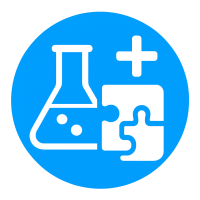 Stacking with Other Nootropics
Stacking with Other Nootropics
Students sometimes combine (“stack”) modafinil with other substances to augment its effects. The most common stack is modafinil + caffeine, as mentioned, to sharpen the stimulant effect – but this must be done carefully due to compounding stimulant side effects (heart rate, anxiety). A safer complementary stack is modafinil + L-theanine, an amino acid from green tea known to promote calm; some users find this takes the edge off and smooths any jitters. Others experiment with stacking modafinil and racetams (like piracetam or phenylpiracetam) aiming to boost memory alongside modafinil’s alertness. While anecdotal reports exist of positive results, there is no robust scientific evidence that such combinations synergistically improve grades. If attempting a stack, add only one variable at a time and at low doses to gauge tolerance. Avoid stacking modafinil with other prescription stimulants (e.g. Adderall, Ritalin) – this can overly stress your cardiovascular system and escalate anxiety. As a general rule, simpler is safer: modafinil alone is usually effective enough for most students’ needs, and piling on more drugs often yields diminishing returns with greater risk.
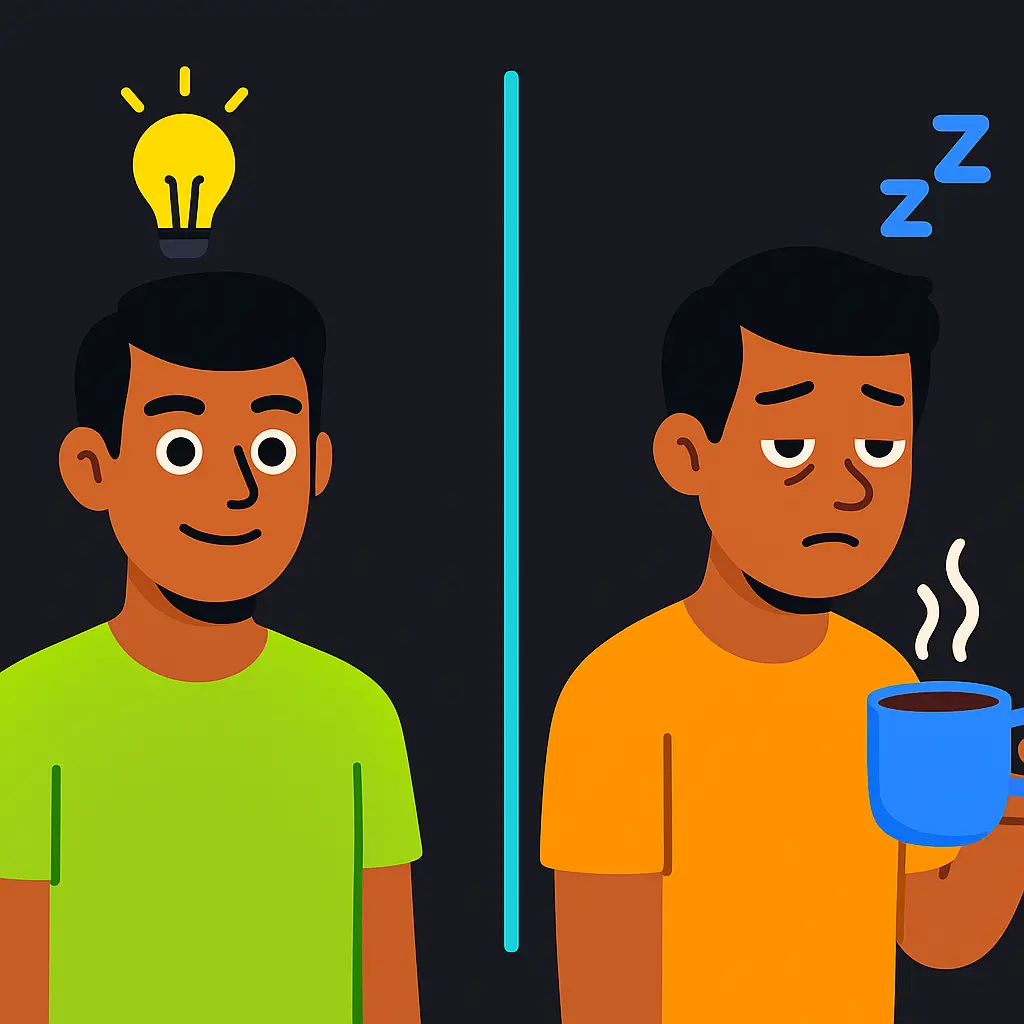
Modafinil’s effects last significantly longer than caffeine’s. A single dose of modafinil can maintain elevated focus and alertness for an entire day, whereas caffeine’s boost peaks within an hour or two and tapers off much sooner. Students who take modafinil in the morning report being able to sustain concentration into the evening without exhaustion, unlike coffee which might require multiple cups to cover the same period (often resulting in jitteriness or an energy crash)32. By understanding the duration of effect – modafinil’s slow, steady decline versus caffeine’s quick spike and drop – students can better plan their study strategy and avoid over-caffeinating or mistiming their stimulant use.
Modafinil Side Effects & Safety: Complete Risk Management Guide
| Common Side Effect | Mitigation Strategies |
|---|---|
| Insomnia (Sleeplessness) | Take modafinil early in the day – ideally before lunch – so it wears off by night32. Avoid dosing within ~8 hours of bedtime. Develop a wind-down routine (no screens, dim lights) to help fall asleep if still alert. Never add alcohol or sedatives39 (“downers”) to force sleep, as mixing them with stimulants is dangerous. |
| Headaches & Dehydration | Stay hydrated – drink water frequently throughout the day since modafinil can be dehydrating. Headaches are often remedied by hydration and taking magnesium or a mild pain reliever if needed. If headaches persist, try lowering the dose next time. Also ensure you’re not staring at books or screens nonstop; take short eye-strain breaks.5 |
| Appetite Suppression | Don’t skip meals. Eat a hearty meal when you dose (before the appetite loss kicks in), and schedule food breaks by the clock rather than waiting to feel hungry. Smoothies or protein bars can help if full meals are unappealing. Keeping blood sugar stable will also help you sustain energy and avoid an end-of-day “crash” once modafinil wears off and hunger returns. |
| Anxiety or Jitters | Start with lower doses (50–100 mg) to gauge your reaction if you’re anxiety-prone. Avoid excessive caffeine or other stimulants on modafinil33 – this combo can spike heart rate and nervousness. If you feel anxious, grounding techniques (short walk, deep breathing) can help. Some students take L-theanine alongside modafinil to promote calm. In general, ensure you are well-rested and not highly stressed on modafinil days; the drug can amplify an already anxious state.33 |
| Tolerance Build-up | Use sparingly – limit modafinil to the days you truly need it. Following a “not daily” rule (e.g. 2–3 times a week max) helps prevent developing tolerance40. If you notice diminished effects, take a longer break (“drug holiday”) for a week or two. Some users report that tolerance is less of an issue with modafinil compared to Adderall, but it can occur. Keeping dosages moderate (200 mg or less) and cycling days off will preserve the drug’s potency when you do use it. |
In addition to the above, students should be aware of a few broader points. Mood swings or “come-down” effects can occur as modafinil wears off – some feel a bit irritable or mentally fatigued in the evening. Mitigation here involves good self-care: have a healthy dinner, allow yourself to relax, and don’t plan critical work right after a modafinil day if you anticipate a slump. Stay mindful of mental health: while rare, a small subset of individuals report feelings of depression or paranoia on modafinil, particularly with sleep deprivation. If you have any underlying psychiatric conditions, use caution and perhaps consult a doctor before using it, as modafinil can interact with mood and anxiety disorders.
Finally, while modafinil has a low addiction profile (no intense highs or cravings)5, psychological dependence is a risk – you might feel like you can’t study without it. To avoid this, prove to yourself you still can study normally on off-days. Reserve the drug for special heavy workloads, not every minor assignment. By keeping modafinil as a tool rather than a crutch, you can excel academically without becoming reliant on any substance.
 Modafinil vs Adderall vs Caffeine: Student Study Drug Comparison
Modafinil vs Adderall vs Caffeine: Student Study Drug Comparison
How does modafinil stack up against classic stimulants like caffeine and Adderall, or other nootropics like racetams? The table below compares these in terms of effects, benefits, and drawbacks:
| Aspect | Modafinil (Provigil) | Caffeine (Coffee/Tea) | Adderall (Amphetamine) | Racetams (e.g. Piracetam) |
|---|---|---|---|---|
| Prescription Status | Prescription-only (Schedule IV in US – low abuse risk)25. In the UK, not illegal to possess for personal use, but illegal to supply without prescription41. Obtained via Rx or gray-market online pharmacies. | No prescription needed; found in beverages, OTC pills. Universally legal and easily available (common in student diets). | Prescription-only (Schedule II in US – tightly controlled due to high abuse potential)5. Illegal to use without a prescription; often obtained illicitly by students. | Generally not prescription drugs. Piracetam and similar are sold as supplements in many countries (unregulated in the US, semi-regulated in EU). Legal OTC nootropics, though not FDA-approved for cognitive use. |
| Primary Effects | Wakefulness promoter; prolonged alertness ~12 hours, with enhanced focus and reduced fatigue. Improves complex cognitive task performance (planning, decision-making) but not a huge impact on simple memory recall79. Little to no euphoria – a “clean” stimulation without feeling high5. | Classic stimulant; short-term alertness boost for 2–4 hours per dose. Reduces tiredness and can improve concentration temporarily. Often increases jitteriness and physical energy. Helps fight drowsiness but comes with a post-caffeine “crash” as effects wear off. | Powerful CNS stimulant; strong increase in focus, energy, and motivation (often with a mild euphoria/high). Effect duration ~4–6 hours (instant-release) or up to 8+ hours (extended-release). Can significantly enhance concentration and productivity, especially in ADHD patients. However, non-ADHD users may experience more distractibility or hyperfocus on unimportant tasks as a downside. | Not stimulants per se; cognitive modulators believed to enhance memory and learning processes. Piracetam’s effects are subtle: some report improved memory recall or verbal learning, but it does not produce noticeable alertness or wakefulness. No immediate “pep” – racetams are thought to work over days or weeks, if at all, and evidence of benefit in healthy individuals is limited7. |
| Study Endurance | Excellent for extended study sessions – one dose covers a full day of studying without significant loss of focus29. Greatly delays mental exhaustion. Keeps you awake and mentally functional if pulling an all-nighter (though not a substitute for sleep long-term). | Moderate – can help you feel awake for a while, but you may need multiple cups for a long study session, which can lead to diminishing returns (jitters, frequent bathroom trips, eventual energy crash). Caffeine can’t sustain performance late into the night as effectively as modafinil without compromising sleep heavily. | High for duration of effect – Adderall can make it possible to intensely focus for hours on end. Many students use it to marathon through assignments. However, once it wears off, users often experience a “come-down” of fatigue and low mood. Also, pulling all-nighters on Adderall can lead to a hard crash and cognitive fog the next day. | Mild – any perceived endurance boost is indirect (if your memory processing is slightly better, studying might feel more efficient). Racetams do not prevent sleepiness. Students usually combine racetams with caffeine or other stimulants if they need alertness. |
| Effect on Motivation | Often increases drive and task motivation. Users feel more interested in work and less prone to procrastination12. Tasks feel manageable and even engaging, which can improve study throughput. No classic reward “high,” but a subtle reinforcement to keep working. | Mild – primarily by reducing fatigue, caffeine can indirectly improve motivation (it’s easier to start studying when you’re not groggy). It may elevate mood briefly, but large amounts can cause anxiety or restlessness that undermine focused motivation. | Very strong – Adderall’s dopaminergic effects can produce a pronounced sense of motivation, confidence, and urgency to complete tasks. Users often feel compelled to organize, study, or work enthusiastically. The risk is over-focus or obsession on minor tasks and, in some cases, stimulant-induced anxiety that can derail productive motivation. | Unclear or minimal – racetams aren’t known to boost motivation. If anything, a user might feel a subtle cognitive clarity that could marginally help motivation, but there’s no stimulant effect or reward feedback. Many racetam users report no subjective feeling at all, just hoped-for cognitive improvements. |
| Memory and Learning | Mixed evidence. Some studies show improved learning in complex tasks and working memory in certain conditions15, while others find no significant direct memory enhancement10. Subjectively, students feel they retain information better because they can study longer and more lucidly. Modafinil likely helps indirectly by keeping attention high during learning. | Short-term memory may feel sharper simply because you’re more awake. Caffeine has been shown to aid memory consolidation if taken after learning (in some studies), but overall it’s not a memory enhancer – just prevents grogginess. Too much caffeine can actually impair working memory by increasing anxiety. | For those with ADHD, Adderall notably improves working memory and executive function, aiding learning. In non-ADHD users, it might slightly improve rote memory and persistence on boring tasks. Some research on healthy adults shows modest memory benefits, but also cases of overconfidence without actual improvement. In essence, Adderall can help you grind in the moment, but doesn’t guarantee better long-term retention and can interfere with sleep (which is vital for memory). | Racetams were designed as memory drugs. Piracetam has shown memory benefits in dementia or dyslexia patients, for example, but evidence in healthy students42 is limited. Some students take piracetam hoping to enhance memory encoding and recall; any effect is subtle and usually requires consistent dosing over time. If a student expects a noticeable immediate memory boost, racetams will likely disappoint compared to modafinil or Adderall’s acute effects. |
| Common Side Effects | Generally well-tolerated. Possible side effects include headache, insomnia, anxiety, and nausea143. Usually mild if they occur – e.g. a headache that resolves with hydration, or slight nervous energy. Rarely can cause more serious reactions (e.g. severe rash), but those are extremely uncommon. Importantly, modafinil lacks the strong spike in blood pressure and heart rate of classic stimulants, making side effects less cardiovascular in nature6. | Well-known side effects: jitters, increased heart rate, frequent urination, and insomnia if taken late. High doses can cause anxiety or stomach upset. Caffeine’s “crash” – a few hours after intake – can bring fatigue and irritability, especially if one is caffeine-dependent. It’s easy to overshoot optimal doses: a little caffeine is focusing, too much is counterproductive. It’s also mildly addictive (habit-forming), though not in a severe way. | Side effects are more pronounced: elevated blood pressure, racing heart, insomnia, loss of appetite, dry mouth, and often emotional effects like anxiety or irritability (especially as the drug wears off). Adderall can produce euphoria, which contributes to its high addiction potential. Dependency and tolerance are real risks; frequent misuse can lead to needing higher doses and feeling unable to function without it. There’s also a risk of more severe effects (palpitations, mood swings, even psychosis at extreme doses). In short, Adderall is effective but comes with a heavier side-effect burden. | Side effects are typically minimal for racetams. Piracetam’s most noted side effect is headache, which is thought to result from increased acetylcholine usage in the brain – often mitigated by taking a choline supplement. Some users report brain fog or dizziness, but many experience nothing noticeable. Racetams don’t cause stimulant-like side effects (no heart or sleep disturbances). They are considered physically safe, with very low toxicity. The main “side effect” might simply be that you spent money on something that doesn’t do much for you. |
| Summary of Use | Effective study aid for extending study duration and maintaining quality of work. Best used occasionally for big academic challenges, with mindful habits to manage minor side effects. Generally safer and with fewer highs/lows than Adderall – a reason it’s often called the “smoother” smart drug. Not a substitute for proper sleep and time management, but a powerful tool when used responsibly. | Ubiquitous and easy, caffeine is the baseline stimulant most students already use. Useful for a quick boost, but limited in scope – likely insufficient alone for extreme demands like an all-night study session. Low risk in moderation, but be wary of dependency (the daily coffee habit) and the diminishing returns of excessive consumption. Often used in combination with other methods. | Potent but risky, Adderall can yield dramatic focus and productivity boosts – some students swear they couldn’t have made it through without it. However, the ethical and health costs are significant: it’s illegal without a prescription, can lead to addiction, and may exact a toll on mental and physical health. Generally, recommended only if you have a prescription for legitimate ADHD treatment; otherwise, modafinil or other nootropics are considered safer alternatives for off-label enhancement. | Subtle nootropic, racetams represent a different approach: not explicitly “stimulant,” but aiming to enhance cognitive function over time. Some studious biohackers include racetams in their regimen for a possible memory or clarity edge. The lack of immediate noticeable effect makes it hard to tell if it’s helping. Racetams might be worth exploring for the especially curious (they are relatively safe and legal), but most students looking for a tangible boost gravitate toward stimulants like modafinil or caffeine for obvious results. |
In summary, modafinil occupies a middle ground between common caffeine and potent amphetamines. It provides long-lasting focus and wakefulness without the “roller coaster” highs and lows of something like Adderall6. Caffeine is accessible and familiar but comparatively short-acting and less potent. Adderall is extremely effective for focus and motivation, yet carries heavy risks and legal issues. Racetams are low-risk and possibly beneficial for cognitive health, but their effects are subtle and not well-proven for acute academic performance. Many students view modafinil as a preferred choice for cognitive enhancement because it’s seen as effective yet comparatively gentle: it keeps you alert and focused for a whole day, feels less extreme on the body/mind than Adderall, and isn’t as socially common (or socially acceptable) as caffeine but is gaining traction. Ultimately, each tool has its pros/cons, and some students even use them in combination (e.g. modafinil in the morning, a coffee in the afternoon “for taste and an extra push”). What’s clear is that modafinil has solidified its reputation as a leading academic performance aid in the student community – the “go-to” smart drug when the goal is maximum productivity with minimal side effects.
 Conclusion
Conclusion
Modafinil’s off-label use in academia underscores the modern student’s pursuit of productivity in a competitive environment. By promoting wakefulness, concentration, and endurance, modafinil can indeed confer an edge during critical study periods or exams2. Students around the world have formed a subculture around this drug – sharing dosing schedules, success stories, and cautionary tales – reflecting both its perceived benefits and the need for responsible use. This comprehensive guide has highlighted that while modafinil can extend focus and reduce fatigue, it is not a magic bullet: one must still manage sleep, nutrition, and study strategy. Used wisely, modafinil can help a student push beyond normal limits when needed – powering through a marathon library session or enlivening a brain dulled by back-to-back lectures. But abuse or carelessness (such as neglecting sleep or taking too high a dose) can backfire, leading to diminished returns or health risks.
For those considering modafinil, weigh the potential for enhanced focus and motivation against the ethical considerations (is it a form of “cheating” or unfair advantage?) and the personal health management it requires (staying hydrated, timing doses, etc.). Many universities are now debating cognitive enhancers openly, and some have even started informational workshops on smart drugs16. As with any drug, individual responses vary – some students hail modafinil as life-changing, while others find it wasn’t worth the headache (literally or figuratively).
In closing, modafinil can be a powerful ally in your academic toolkit if treated with respect. Stay informed (always keep an eye on the latest research and user experiences), follow safe practices, and remember that true academic success ultimately comes from mastering the material – modafinil can’t do that for you, but it might help you do it better for yourself. Good luck with your studies, and stay safe and smart out there!
 Sources & References
Sources & References
- Modafinil - Wikipedia
- Review of ‘smart drug’ shows modafinil does enhance cognition | University of Oxford
- Cognitive enhancers - Alcohol and Drug Foundation
- Taking the 'Smart Drug' Modafinil Made Me Love Work but Hate People | Vice
- Users Say the 'Smart Drug' Modafinil Is the New Adderall — Only Better | VICE News
- Adderall vs. Modafinil: How Do They Compare? | American Addiction Centers
- Modafinil & Your Brain | Cognitive Vitality | Alzheimer's Drug Discovery Foundation
- We Asked Students What Drugs They Take to Study | Vice
- The off-prescription use of modafinil: An online survey of perceived risks and benefits | PLOS One
- Universities must do more to tackle use of smart drugs, say experts | The Guardian
- Prevalence of the use of prescription stimulants as “study drugs” by UK university students: A brief report | PMC
- Student cognitive enhancement with non-prescribed modafinil: is it cheating? A survey study | International Journal for Educational Integrity
- Modelling predictors of UK undergraduates' attitudes towards smart drugs | ScienceDirect
- Students used to take drugs to get high. Now they ... - The Guardian
- The Use and Impact of Cognitive Enhancers among University Students: A Systematic Review | PMC
- From Ritalin to Modafinil: your guide to taking study drugs safely | Dazed Digital
- Pitolisant-supported bridging during drug holidays to deal with ... | ScienceDirect
- Piracetam Does Not Enhance Cognitive Abilities in Moderate to ... | Nature